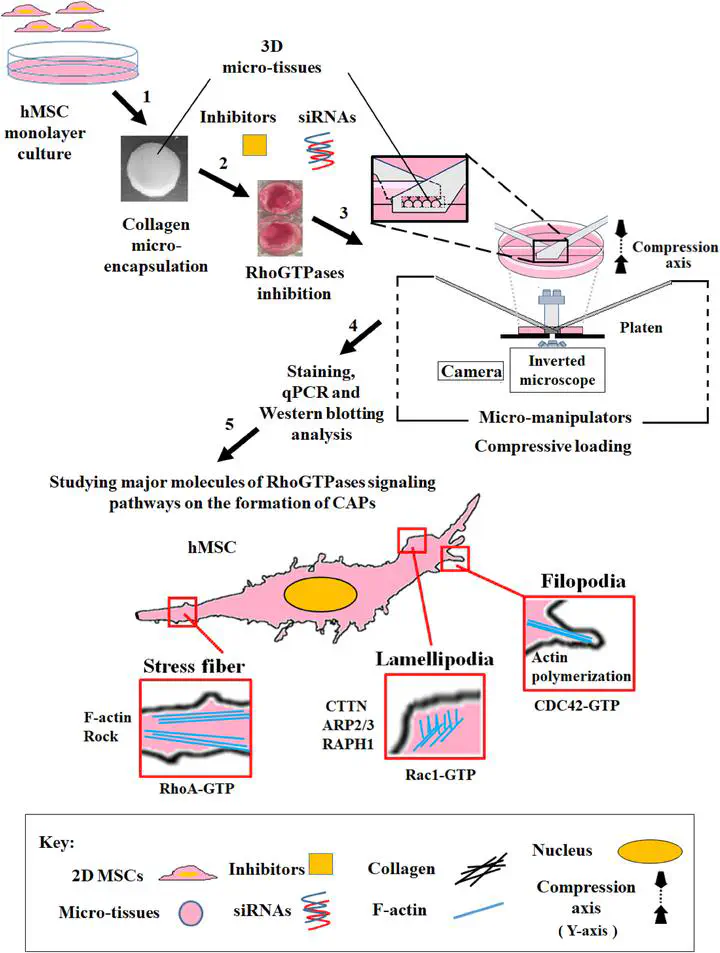New Paper: Rac1 GTPase regulates formation of compression-induced protrusions (CAPs) in human mesenchymal stem cells (MSCs) microencapsulated in 3D collagen meshwork

In this paper, we investigated the role of RhoGTPases in the formation of compression-induced actin protrusions (CAPs) using mesenchymal stem cells encapsulated in 3D collagen micro-tissues.
Check out the published paper here: https://doi.org/10.1016/j.biomaterials.2021.120829
Abstract
Cells can sense mechanical signals through cytoskeleton reorganization. We previously discovered the formation of omni-directional actin protrusions upon compression loading, namely compression-induced actin protrusions (CAPs), in human mesenchymal stem cells (MSCs) in 3D micro-tissues. Here, the regulatory roles of three RhoGTPases (CDC42, Rac1 and RhoA) in the formation of CAPs were investigated. Upon compression loading, extensive formation of CAPs was found, significantly associated with an upregulated mRNA expression of Rac1 only, but not CDC42, nor RhoA. Upon chemical inhibition of these RhoGTPase activity during compression, only Rac1 activity was significantly suppressed, associating with the reduced CAP formation. Silencing the upstream regulators of these RhoGTPase pathways including Rac1 by specific siRNA dramatically disrupted actin cytoskeleton, distorted cell morphology and aborted CAP formation. Silencing cortactin (CTTN), a downstream effector of the Rac1 pathway, induced a compensatory upregulation of Rac1, enabling the MSCs to respond to the compression loading stimulus in terms of CAP formation, although at a reduced number. The importance of Rac1 signalling in CAP formation and the corresponding upregulation of lamellipodial markers also suggest that these CAPs are lamellipodia in nature. This study delineates the mechanism of compression-induced cytoskeleton reorganization, contributing to rationalizing mechanical loading regimes for functional tissue engineering.